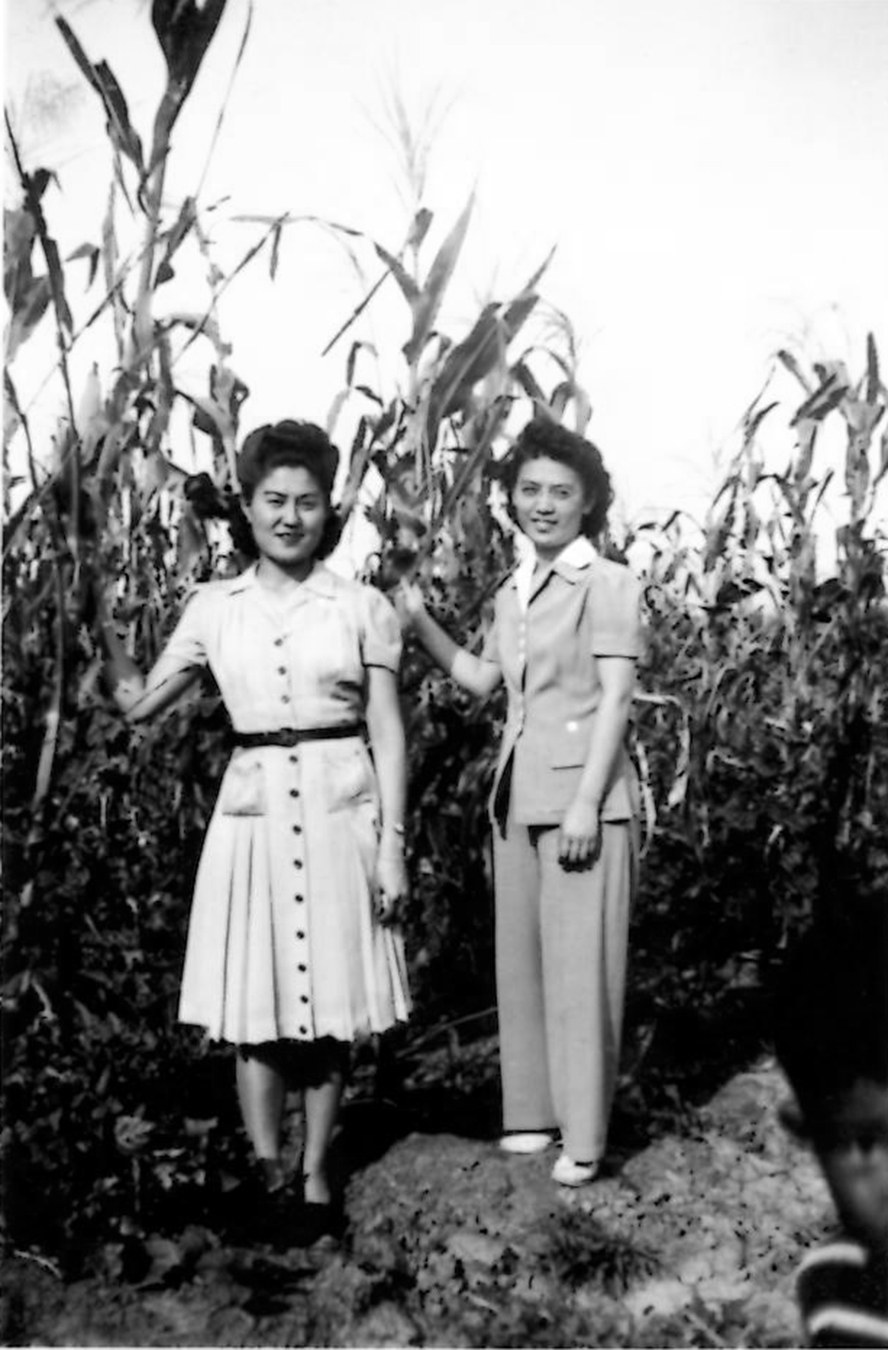Courage and Compassion
June 1–November 3, 2019. A past exhibition exploring the legacy of Albuquerque’s Japanese American community and the impact World War II-era incarceration camps had on these New Mexicans.
Courage and Compassion: Our Shared Story of the Japanese American World War II Experience
June 1–November 3, 2019

Evelyn Saeda (right) stands in a corn field near Albuquerque on August 30, 1942. She was the daughter of Japanese immigrants and the mother of Steve Togami, current president of the New Mexico Japanese American Citizens League. Courtesy of the Togami family.

The exhibition will be on view in the William A. + Loretta Barrett Keleher community history gallery. The Keleher Gallery offers community groups an opportunity to tell Albuquerque's history. Six-month rotating exhibitions encourage active community engagement in determining the content of the gallery.
Courage and Compassion: Our Shared Story of the Japanese American World War II Experience explored the legacy of Albuquerque’s Japanese American community and the impact World War II-era incarceration camps had on these New Mexicans. Courage and Compassion opened at Albuquerque Museum on June 1 and runs through November 3, 2019.
The exhibit included a traveling component, funded in part by a grant from the National Park Service, by Go For Broke National Education Center (GFBNEC) in Los Angeles that features the history of Japanese Americans during WWII. Approximately 120,000 men, women, and children of Japanese ancestry living on the West Coast of the United States were rounded up and incarcerated in prison camps located throughout the West, Southwest, and Arkansas.
Courage and Compassion explored the little-known stories of citizens and legal residents of Japanese ancestry whom the FBI targeted as “enemy aliens.” Thousands were held without due process in Department of Justice and U.S. Army-run camps in Lordsburg, Santa Fe, Fort Stanton, and Old Raton Ranch.
Images and personal objects loaned by descendants of prisoners and New Mexico’s Japanese American families tell the story of a turbulent time both inside and outside the barbed wire. Historically significant objects include a hand-carved toolbox and a wooden diorama made by Issei (first-generation Japanese Americans) incarcerated in Lordsburg; an original issue of the Lordsburg camp's mimeographed Japanese language newspaper; and New Mexico Department of Justice documents from the 1940s in which John Kaichiro Nakayama requested permission to travel from his home in Las Cruces to El Paso, Texas for medical treatment.
Community curator Nikki Nojima Louis, artistic director of JACL Players, the New Mexico Japanese American Citizens League (NMJACL) theater group, developed the local stories in the exhibition. Louis herself was incarcerated as a child with her mother in Minidoka, an Idaho camp.
"Albuquerque is the hub of the story wheel that connects the people and places of New Mexico to the tales of generosity extended to Japanese and Japanese Americans at a time of great turbulence. These are the little known stories of our fathers and grandfathers who were held in Lordsburg and Santa Fe prison camps, of the people of Gallup, Las Cruces, and Clovis who extended helping hands, and of the descendants of these people who’ve come forward to share their memories," Louis said.
Courage and Compassion also covered the courageous segregated units of the 100th Infantry Battalion, 442nd Regimental Combat Team (RCT), and the Military Intelligence Service (MIS). Visitors learn about the Nisei (second-generation Japanese American) WWII experience and its legacy, study the nature of courage during a time of crisis, and consider the relevance of that wartime experience today.
"The exhibit honors everyday people who rose above the public hysteria of WWII to recognize Japanese Americans as friends, neighbors, and citizens," Dr. Mitchell T. Maki, GFBNEC's President and Chief Executive Officer, said. "These untold stories have real relevance today as we confront issues of loyalty, citizenship, due process, and Constitutional rights."
Albuquerque Museum was the last stop on GFBNEC’s 10 U.S. community tour, which started in 2017. Other community partners include: Willamette Heritage Center, Salem, Ore.; Japanese Cultural Center of Hawai'i, Honolulu, Hawai'i; the Kingsburg Historical Society, Kingsburg, Calif.; Oberlin College and Conservatory, Oberlin, Ohio; Twin Cities Japanese American Citizens League, Minneapolis/St. Paul, Minn.; Saint Mary’s School of Nursing Alumni Association, Rochester, Minn.; History Department, Bradley University, Peoria, Ill.; and Japanese American Citizens League of the Monterey Peninsula, Monterey, Calif.

